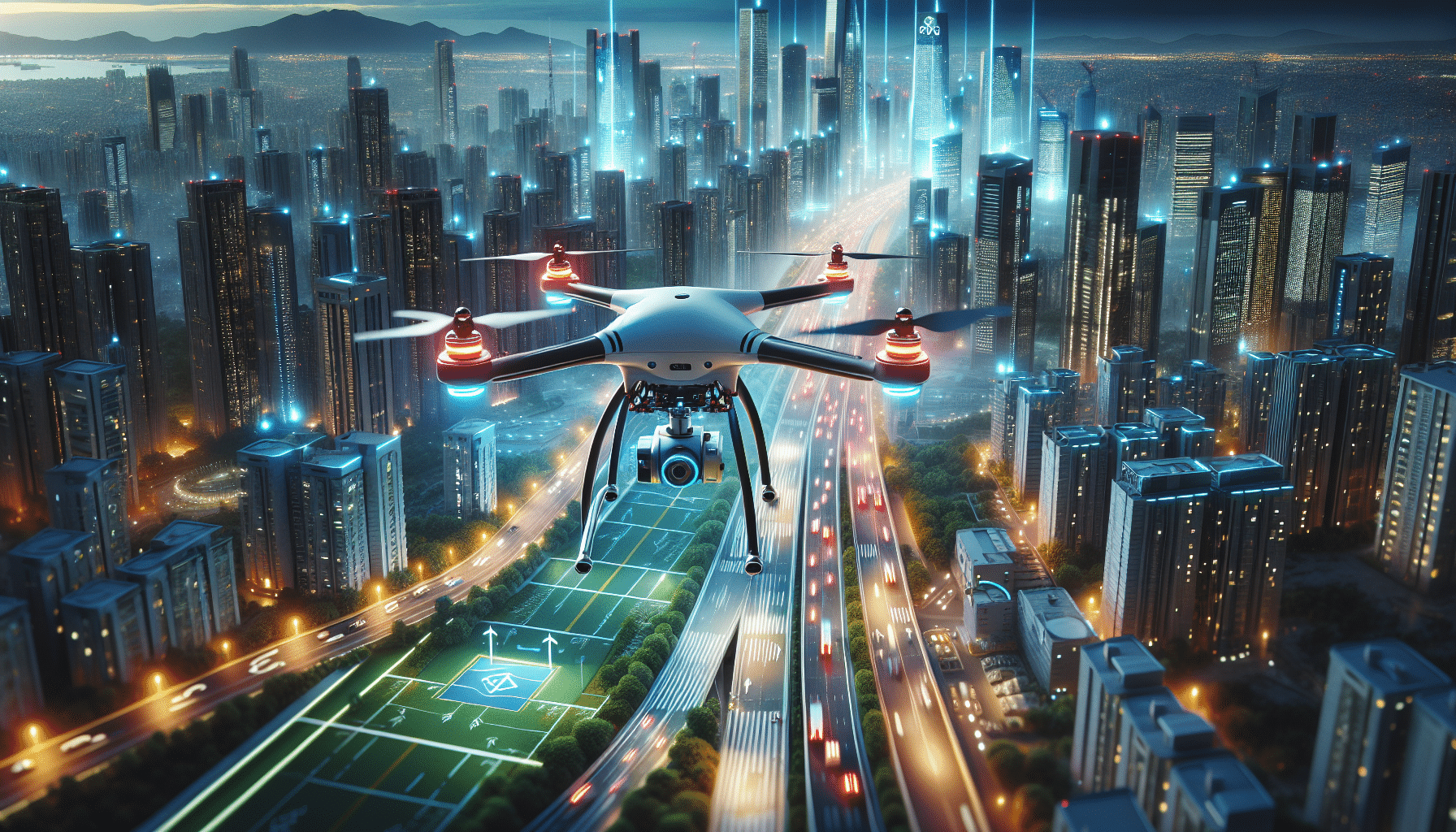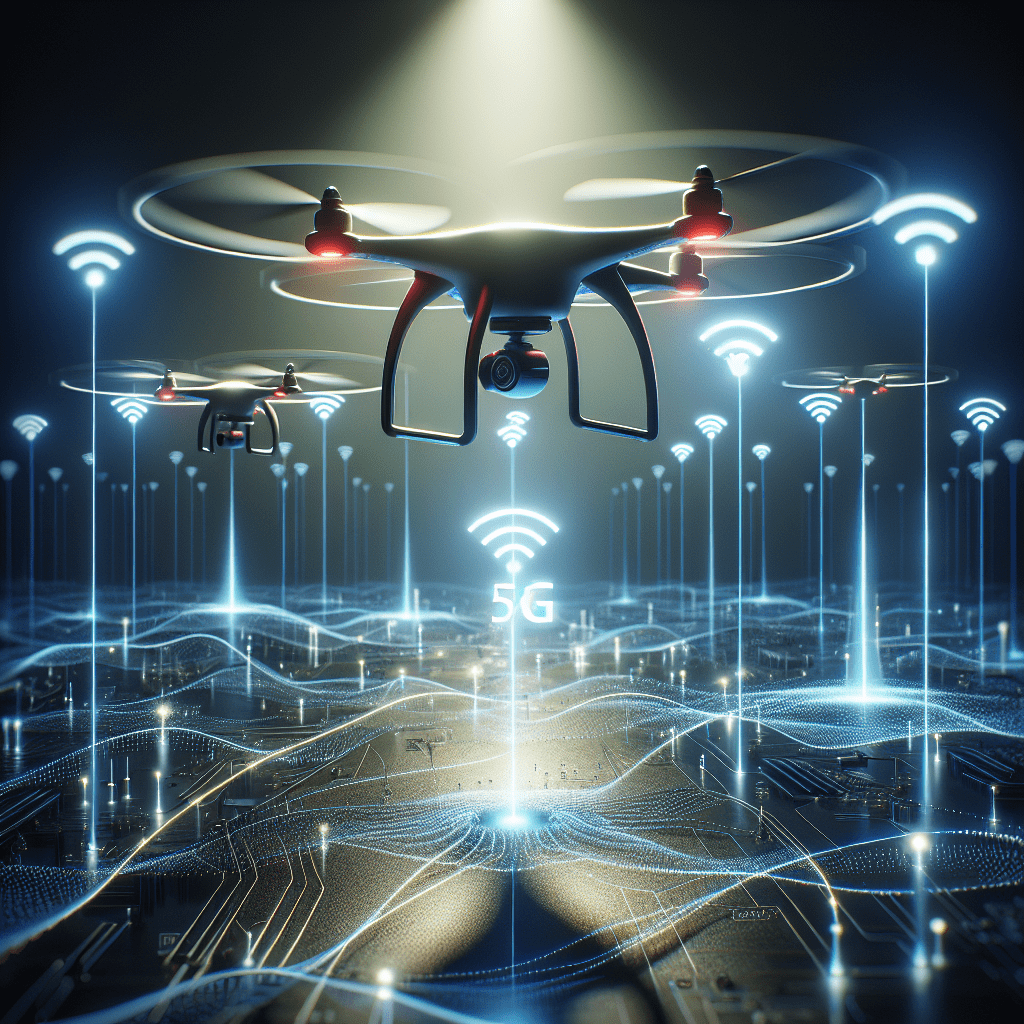Understanding Drone Compatibility with 5G Networks
Drone compatibility with 5G networks is a pivotal topic in modern drone technology discussions. As the demand for more robust communication systems escalates, especially in applications like aerial photography, surveying, and autonomous operations, integrating 5G capability into drones promises to enhance their performance exponentially. With higher bandwidth and lower latency, 5G networks allow drones to transmit data faster, navigate more efficiently, and support sophisticated features such as real-time video streaming. This level of connectivity not only enhances operational effectiveness but also increases safety and reliability.

The Technical Aspects of 5G Compatibility
For a drone to be 5G compatible, it must be equipped with a 5G modem and antenna systems capable of tapping into the ultrahigh-frequency bands that 5G uses. The design of these components is paramount; not all drones can simply be retrofitted with 5G capabilities. Manufacturers must consider structural, weight, and power efficiency issues to maintain optimal flight performance. As such, many newer drone models are being designed from the ground up to be 5G ready, catering to both consumer and commercial needs.
Benefits of 5G Integration
Integrating 5G technology into drones offers numerous advantages. With its ability to facilitate faster data transfer rates and reduce latency, 5G empowers drones to execute tasks that were previously unfeasible. For instance, real-time high-definition video feeds can be streamed without lag, enhancing applications such as surveillance, search and rescue missions, and even traffic monitoring. Moreover, the extensive bandwidth of 5G allows for multiple drones to operate simultaneously without interference, a feature essential for large-scale operations.
Can Drones Use 5G? Exploring the Possibilities
Absolutely, drones can use 5G networks, and this capability opens up a realm of possibilities. In practical terms, drones equipped with 5G can operate in environments previously limited by slower network speeds. For example, in urban settings where many devices compete for bandwidth, 5G’s ability to handle significant data traffic can facilitate complex drone operations, such as autonomous delivery services or emergency response systems. The deployment of 5G networks is, therefore, a game changer, extending the operational range and enhancing the reliability of drone missions.
“5G technology is redefining what is achievable with drone flights, providing real-time responsiveness and a wealth of operational advantages.”
Use Cases of 5G-Enabled Drones
The use cases for 5G-enabled drones are numerous and varied. In agriculture, for instance, drones can utilise 5G’s high-speed connectivity to transmit data on crop health and growth patterns directly to farmers in real-time. This data-driven approach can dramatically improve decision-making and resource allocation, thus enhancing crop yields. Similarly, in construction, drones can continuously stream video to project managers, enabling real-time oversight and faster identification of potential issues.
Challenges and Considerations
While the benefits of drone compatibility with 5G networks are significant, challenges persist. The infrastructure to support 5G networks is still being developed globally, and areas with inadequate coverage may experience limitations in drone operations. Furthermore, operators must consider regulatory frameworks, as drone flight regulations vary widely from one jurisdiction to another. Adapting to these evolving regulations is crucial for seamless integration of 5G into drone technology.
The Role of 5G Base Stations on Drones
A fundamental aspect of drone compatibility is the incorporation of 5G base stations directly onto the drones themselves. This innovation allows drones to act as mobile communications platforms, significantly extending the range and capabilities of drone operations. By utilising 5G base stations, drones can facilitate better connectivity for various devices in their vicinity, effectively turning them into flying hotspots. This function is particularly pivotal during large events, disasters, or in remote areas lacking infrastructure.

Enhancing Communication Capabilities
The presence of 5G base stations on drones drastically enhances communication capabilities, enabling efficient data relay across vast distances. In emergency situations, for example, unforeseen circumstances might disrupt conventional communication methods. A drone functioning with a 5G base station could quickly establish a communication network to assist first responders, ensuring their effective coordination. This capability is invaluable for disaster relief tasks, allowing for quicker deployment of assistance in crises.
Potential Future Developments
Looking towards the future, the integration of 5G base stations onboard drones is likely to evolve. With advancements in technology, we may see the introduction of swarm technology, where multiple drones communicate using 5G networks to perform intricate tasks collaboratively. This development holds a lot of promise for sectors such as wildlife monitoring and environmental conservation, where coordinated efforts could yield more effective results.
Exploring Various 5G Use Cases with Drones
The versatility of drones equipped with 5G technology allows for diverse use cases across multiple sectors. One of the most promising areas is autonomous delivery services. Companies like Amazon and UPS have already begun testing drone delivery systems, and with 5G, these deliveries can be made faster and more reliably. The drones can circumvent obstacles in real time and manage delivery routes efficiently, thereby optimising the logistics chain.
Smart Cities and Urban Development
In the context of smart cities, 5G-enabled drones can support urban planners and engineers by providing aerial assessments of construction sites. Drones can perform surveys and inspections while transmitting high-resolution imagery in real time. This information supports better decision-making during city development and enhancement projects, facilitating the integration of technology into urbanisation.
Healthcare Applications
Healthcare is another vital area in which 5G-enabled drones can play a transformative role. In situations where time is of the essence, such as delivering medical supplies or essential medications to remote locations, drones can significantly decrease transportation times. Furthermore, during health emergencies, drones can conduct rapid health data assessments in affected areas, forwarding information to healthcare professionals to aid in timely decision-making.
Regulatory Considerations for 5G Drones
The integration of drones into 5G networks, while beneficial, does not come without regulations. Governance surrounding drone operations varies significantly across countries, necessitating that operators stay informed about their local laws. Issues such as air traffic management, privacy concerns, and safety regulations must be navigated carefully. Cooperation with regulatory bodies will be crucial to ensure the sustainable and safe deployment of 5G-enabled drones.
Industry Collaboration and Standardisation
Collaboration across industries is essential as we move towards a future where drone compatibility with 5G networks becomes commonplace. Standardisation is needed to facilitate interoperability among drones from different manufacturers and to ensure seamless communications between various devices and networks. Stakeholders, including telecom companies, drone manufacturers, and regulatory authorities, must work harmoniously to lay down the groundwork for robust future developments.
The Future of Drone Compatibility with 5G
As technology continues to advance rapidly, looking ahead, we can expect to see a burgeoning market for 5G-compatible drones, where features like enhanced navigational systems and AI integration become standard. The possibilities for drone applications are nearly limitless, and with 5G networks at their core, businesses worldwide can leverage these advancements to improve efficiency and operational capabilities. Keeping pace with these innovations can provide a competitive edge in various industries.
Conclusion: The Path Forward for Drones and 5G Technology
In conclusion, as we continue to explore drone compatibility with 5G networks, it becomes abundantly clear that the integration of these technologies will redefine how we approach tasks across different sectors. The high-speed connectivity and low latency associated with 5G facilitate autonomous operations and enhance real-time communications, providing significant operational benefits. As industries adapt, and regulatory frameworks evolve, opportunities abound for leveraging 5G-compatible drones in innovative ways. For anyone interested in the latest developments in drone technology, discover how our drones are adapting to cutting-edge technologies. Visit our shop for the latest models!
Frequently Asked Questions
How does 5G enhance drone capabilities?
- 5G provides faster data transfer speeds and lower latency, which enhances real-time drone navigation, remote piloting, and data streaming capabilities.

